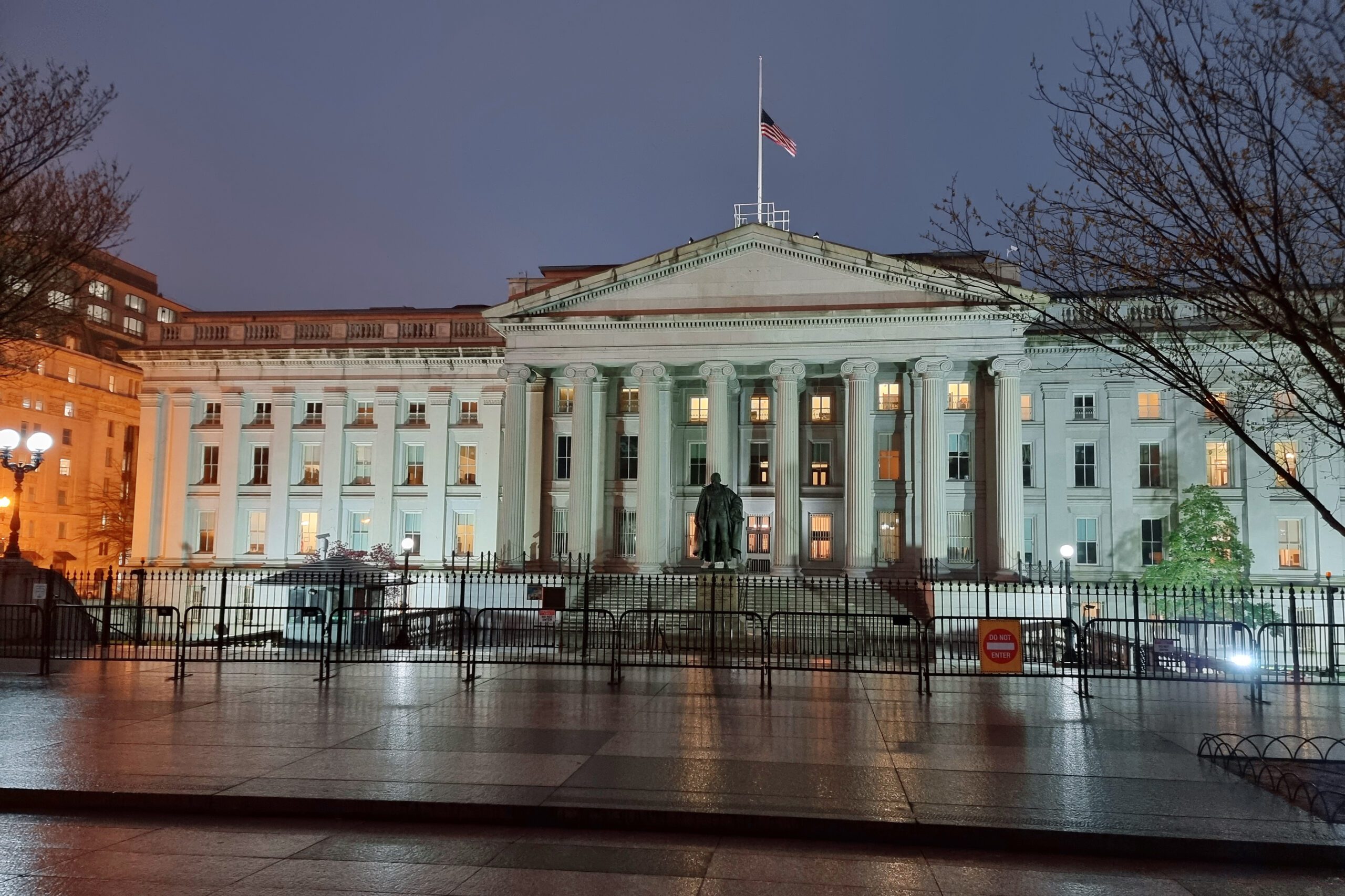Treasury Public Input Pillar One Response
TaxA tax is a mandatory payment or charge collected by local, state, and national governments from individuals or businesses to cover the costs of general government services, goods, and activities.
Foundation appreciates the opportunity to respond to the Treasury Department’s request for public input on the draft OECD/G20 Inclusive Framework Pillar One Multilateral Convention text.
Over the past several years, Tax Foundation has closely followed the developments at the Organisation for Co-operation and Development (OECD) and provided analysis and commentary as the Pillar One proposal has developed.[1]
In general, our appraisal can be summarized with four points. First, Pillar One represents a potential path to eliminating the discriminatory and distortionary digital services taxes some countries have implemented in recent years. Second, the allocation of the tax baseThe tax base is the total amount of income, property, assets, consumption, transactions, or other economic activity subject to taxation by a tax authority. A narrow tax base is non-neutral and inefficient. A broad tax base reduces tax administration costs and allows more revenue to be raised at lower rates.
to market jurisdictions is overly complex, and the policy outcome will be untethered to economic circumstances faced by businesses. Third, Pillar One and Pillar Two combined could result in the U.S. Treasury being a net donor to the Amount A system. However, this depends on corporate behavior in reaction to either pillar. Fourth, the impact on Puerto Rico should be examined to avoid unnecessary fiscal consequences for that U.S. territory.
Tax Foundation has supported proposals that comprehensively shift sourcing rules for corporate taxation from the places of production to the location of consumption. The destination-based cash flow tax in the 2016 Republican Blueprint for tax reform was one such proposal.[2]
Compared to that proposal, Pillar One Amount A is a complex mess. It allocates only a fraction of the profits of a fraction of taxpayers to the location of final consumption (either identified directly or indirectly using a proxy measure) resulting in a distortionary tax base that falls heavily on U.S. taxpayers relative to foreign ones. It also eliminates double taxationDouble taxation is when taxes are paid twice on the same dollar of income, regardless of whether that’s corporate or individual income.
through formulas that make very little economic sense but offer some near-term political convenience for the United States.
Ultimately, the decision to ratify this treaty rests with the United States Senate, and we hope both senators and the team at Treasury will closely study the issues raised here.
Digital Services Taxes
Despite both trade and diplomatic pressures placed on countries that have pursued digital services taxes over the years, it seems that a multilateral agreement will be necessary to eliminate these policies. Trade wars and retaliation can be counterproductive, especially at a time when allies should be working even more closely together. If foreign governments are unwilling to back down from these discriminatory and economically damaging policies, then a multilateral arrangement is a valuable alternative to retaliatory tariffs and a trade war.
Concerns Regarding the Amount A Mechanics
The new sourcing rules are built on an assumption that sales factor formulary apportionmentApportionment is the determination of the percentage of a business’ profits subject to a given jurisdiction’s corporate income or other business taxes. U.S. states apportion business profits based on some combination of the percentage of company property, payroll, and sales located within their borders.
can work even if the rules only apply to a small set of companies, on a slice of their profits, and even if those companies do not truly know where their final customers are. That assumption is responsible for much of the rules’ complexity.
Without comprehensive scoping for all companies, the designers of Amount A resort to awkward approximations, like the allocation keys. In the context of an already complex proposal, the allocation keys become necessary proxies, but they do not establish a true economic relationship between a taxpayer and a jurisdiction where a business may owe taxes.
Taking a broad view of the proposal, conflicting principles are at work. In contrast to the consumption-based approach of sales factor formulary apportionment, other provisions are based on the locations of factors of production. For example, the return on depreciationDepreciation is a measurement of the “useful life” of a business asset, such as machinery or a factory, to determine the multiyear period over which the cost of that asset can be deducted from taxable income. Instead of allowing businesses to deduct the cost of investments immediately (i.e., full expensing), depreciation requires deductions to be taken over time, reducing their value and discouraging investment.
and payroll plays a significant role in multiple parts of the rules. In this way, the rules have destination principles working against residence and permanent establishment principles.
Multi-factor formulary apportionment has been part of the U.S. state tax policy landscape for many years, but most states that tax corporate income have moved toward sales factor apportionment over time, eliminating the use of assets and payroll. The impact of this design for Amount A is even less transparent (and more complex) than multi-factor formulary apportionment, but the same tension between principles will remain.
The tiering system and thresholds when eliminating double taxation make the most sense if the goal is to ensure that headquarter jurisdictions from which profitable assets have been shifted feel as little pain as possible from lost revenue. This is likely the case for the United States.
Issues for the U.S. Tax Base
Amount A creates clear winners and losers when it determines which jurisdictions get to tax the profits in scope. If a jurisdiction has a large market, then it will likely win out from the Amount A rules. If a jurisdiction has business entities with very high profit margins, then it will likely lose taxable profits.
The U.S. has both a large market and is home to many multinationals with high profit margins.
If Pillar One Amount A gets adopted, then it will coexist with Pillar Two, the global minimum tax. The minimum tax will, over time, change where businesses locate their high-value assets, particularly intangible property.
By many accounts, U.S. companies will bear the brunt of Amount A. What that means for the U.S. tax base is less clear.
Currently, the U.S. runs a significant trade surplus in charges for the use of intellectual property (royalties). According to data from the Bureau of Economic Analysis, that surplus has averaged $76 billion per year from 2017 to 2022. The overall trade surplus in services was $2.3 billion in 2023.[3] Additionally, year-over-year growth in private fixed investment in IP products has averaged 8.7 percent since the beginning of 2017.[4]
These data are indicative of the U.S.’s strong position for trading services, many of which (particularly intellectual property services) are high value and have high profit margins. The U.S. Treasury would likely raise less money from these companies exporting high-value services from a U.S. base if Amount A is adopted.
Furthermore, if Pillar Two works as intended (and the U.S. remains an attractive place to invest in IP), then new, valuable IP that stays in the U.S. and results in significant sales to foreign customers would further strengthen U.S. service exports and even potentially make the U.S. a net donor in the Amount A framework.
On the other hand, the U.S. may see some revenue benefits from Amount A. Some U.S.-headquartered companies that have modest profit margins within the U.S. have very high profit margins around the world (often due to IP that they hold in offshore jurisdictions). A decent share of those companies’ customers may be in the U.S. So, when the profits are moved to the customers’ location, the U.S. tax base for that company could grow because the most profitable jurisdictions (relative to depreciation and payroll) will be the ones giving up the tax base.
Treasury should release an analysis on the net revenue impact of Pillar One Amount A, as its revenue effects are uncertain. The difference maker would be U.S. companies with high profit margins in foreign jurisdictions and a large portion of their sales made to U.S. customers. Even if those companies are paying tax to the U.S. via the inclusion of global intangible low-taxed income (GILTI), the rate difference between GILTI and the U.S. federal rate will increase tax revenue from those companies.
Puerto Rico
The impact of Amount A on Puerto Rico has been relatively unexplored. If treated as a jurisdiction separate from the United States, then there is a risk that Puerto Rico would be a net donor in Amount A as a jurisdiction with relatively high levels of profits for multinationals. In the 2020 country-by-country report data from the Internal Revenue Service, 361 multinational groups reported total revenues of $107 billion and profits of $34 billion, for a crude profit margin of 32 percent.[5]
Puerto Rico’s fiscal sustainability has been at risk in the last decade, and policymakers should evaluate the extent to which Amount A will increase pressure on the territory’s public finances. Including Puerto Rico as part of the U.S. for the purposes of Amount A would break with current policy, but it could also limit the impact of Amount A on Puerto Rico’s tax base.
Conclusion
Tax Foundation continues to believe that Pillar One is a complex policy that is not ready for adoption. As we said in a consultation response in 2022: “The OECD Secretariat has clearly made progress in developing a policy that works in theory and may have a slight chance to work in practice. However, progress has not been made in developing a policy that achieves the goals of the project while making it possible that elected representatives in governments would be willing to adopt it.”[6]
A multilateral agreement that eliminates digital services taxes would be valuable, but not if it introduces more complexity and leaves unanswered many questions about the impacts on the U.S. tax base.
Stay informed on the tax policies impacting you.
Subscribe to get insights from our trusted experts delivered straight to your inbox.
Subscribe
[1] For some of our work on this issue see, Daniel Bunn, “Response to OECD Public Consultation Document: Secretariat Proposal for a ‘Unified Approach’ under Pillar One,” Tax Foundation, Nov. 11, 2019, and Daniel Bunn and Cristina Enache, “Tax Foundation Response to OECD Consultation on Amount A of Pillar One,” Tax Foundation, Aug. 18, 2022,
[2] Kyle Pomerleau, “Understanding the House GOP’s Border Adjustment,” Tax Foundation, Feb. 15, 2017,
[3] “International Transactions, International Services, and International Investment Position Tables, Table 2.1 U.S. Trade in Services by Type of Service,” Bureau of Economic Analysis, data last revised Jul. 6, 2023, The trade balance could be much higher, however. In recent years, BEA data and data from Eurostat have disagreed on the trade in intellectual property services with Eurostat showing much higher trade surpluses for the U.S. with European Union Member States than is shown in Bureau of Economic Analysis data. For example, the U.S. royalties trade surplus with Ireland was nearly €100 billion ($110 billion) in 2022 according to “Balance of payments by country – quarterly data (BPM6),” Eurostat, data last updated Oct. 13, 2023,
[4] “National Income and Product Accounts, Table 5.6.6. Real Private Fixed Investment in Intellectual Property Products by Type, Chained Dollars,” Bureau of Economic Analysis, data last revised Sep. 29, 2023.
[5] “Table 1A. Country-by-Country Report (Form 8975): Tax Jurisdiction Information (Schedule A: Part I) by Major Geographic Region and Selected Tax Jurisdiction, Tax Year 2020,” Internal Revenue Service, accessed Nov. 30, 2023,
[6] Daniel Bunn and Cristina Enache, “Tax Foundation Response to OECD Consultation on Amount A of Pillar One.”
Share






